As we round out the year, I’ve come to terms with the fact that the final quarter of 2025 Magic is officially Not for Me. I never watched Avatar: The Last Airbender, and, while agnostic on its inclusion in Magic: The Gathering, I at least respect that it has folks with swords and competing schools of magical philosophy. I skipped Marvel’s Spider-Man entirely, much as I’ve skipped every Spider-Man film since Raimi turned over the reins, and I don’t expect to pick up a pack or dip into a draft until Lorwyn Eclipsed launches. That’s not a bad thing—some of my favorite directors have made movies I’ll never watch, and I skip entire phases of musicians I respect. There’s enough of a backlog to keep me busy and enough to revisit to fill the autumn months, which is the ideal season for revisiting.
The fact is: I can no more quit Magic than I can quit listening to music or speaking in English. It’s one of the ways I engage with the world, and one of the major pillars around which my social life is constructed. So, in these fallow periods, when I step away from new cards and when their prolix and puissant influence has siphoned away a little of Commander’s savor, there remains the pinnacle of Magic as an artform: Cube.*
*Alright, yes, Forgetful Fish. Here’s a radical statement for you: Forgetful Fish is a type of Cube.
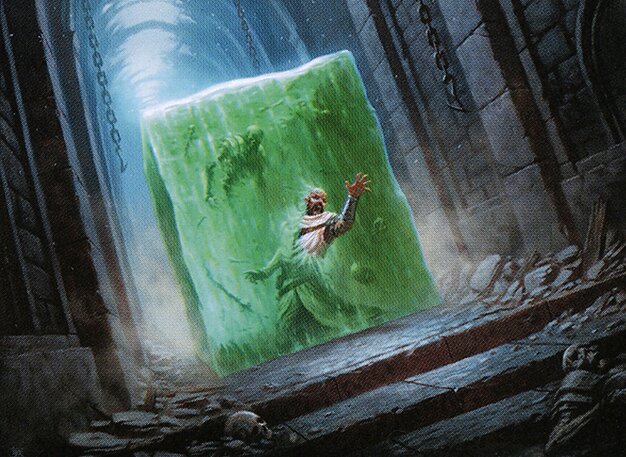
At its simplest, Cube is a curated draft format where the Cube architect picks a certain number of cards—most commonly 360, 540, or 720—to give eight players the opportunity to draft certain archetypes, themes, or color imbalances that the Cube designer finds appealing. This can mean an Artifact Cube, a spooky Cube of nothing but Innistrad and Shadowmoor cards, a Bear Cube of 2/2’s for two mana, etc. The most famous Cubes are Powered Cubes—Cubes that run the Power 9 and the most powerful cards in Magic’s history, where picks will leave you torn between taking a Tolarian Academy or a Mox Pearl. Cube is often a huge investment–the Cube designer has to curate and purchase the cards in the Cube, sleeve them up, randomize the packs with each new draft, and coordinate the schedules of seven other people. It can feel more like being a GM/DM than a drafter, and, like being a GM, it can be both profoundly frustrating and profoundly rewarding.
At its absolute best, Cube is a way to showcase what you love about Magic to the people you love.
My love is annoying. I was raised the only boy and the youngest child of three, which means that my love language is being a contrarian little shit. As an adult, my social life is mostly lawyers and theatre people. All of this means that, to me, any attention is good attention, but annoyed attention from someone you love is especially rewarding. I dominate group chats to farm frowny-face reactions, I do long-form improv comedy, I anxiety-dump on anyone on a road trip with me. My Cubes tend to reflect this hunger for attention and this provocation-as-virtue ethos. In a format where you can play whatever you like, I gravitate towards Naughty//Nice, Balance, and Tangle Wire. I want everyone to have fun, but I also want myself to have fun, which means a couple of groans and grumbles mixed in there—my old physics professor would often remind us that a huge portion of physics is calculating and managing friction. I’d expand beyond physics: a huge portion of human relationships and creative projects lies in managing friction, as well.
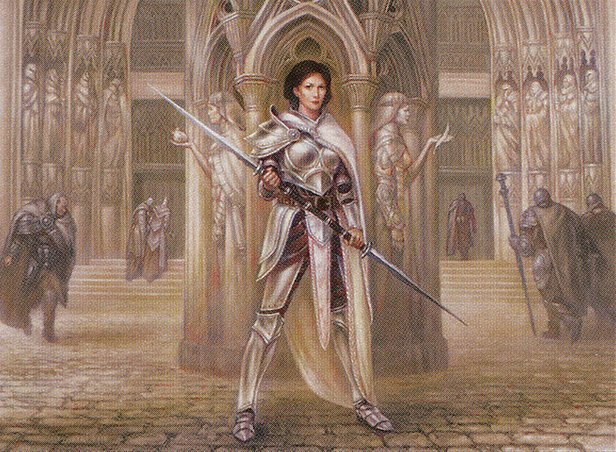
Court Street Denizen by Volkan Baga
This week marks a milestone: twenty years of Ravnica. Ravnica: City of Guilds was released on Friday, October 7th, 2025, and hauled the game out of the stagnation of Mirrodin and the opacity of Kamigawa. I’m on record (LINK) as believing that Ravnica is Magic’s most important block. At a time when sales had plummeted and Magic was cooling as a cultural fad, Ravnica cemented the philosophies of the color pairs and course-corrected after a difficult couple of years, mechanically and creatively. It gave names to dual-color archetypes and trained us to think in the ethos encapsulated in each one.
Invasion Block was about what colors could do; Ravnica Block was about what colors are. Invasion was about mechanics, while Ravnica was about philosophies. More than that, Ravnica was about what you brought to the gaming table; Ravnica redefined Magic because it redefined how players identified with the game.
Identity has been a part of Magic since the beginning; one of Richard Garfield’s moments of genius was tying each of the five colors of magic to a specific biome and to an identity. White, born from the sun-soaked, open Plains, was about hauling evil into the light and counteracting it martially. Blue, at home on tempestuous Islands, played with illusions to befuddle the mind and alter the landscape. Black, soaking in the rich decay of the Swamp, was willing to exploit the dead and sacrifice its own lifespan for occult power. Red, thriving on volcanic peaks and in subterranean Mountain lairs, called upon violent, molten magic. Green, dwelling in the primeval Forests, harnessed the power of the natural world to crush and cultivate.
Early Magic was limited in how it developed these philosophies—Black was evil, White was good, Red was fire, Green was Elves, and Blue did a bit of everything—but the five philosophies were why players bought in. Early Magic merchandise was focused on the mana symbols, the elegant logos that let you display your affinity to other players as a coded identifier. If Magic simply had colored dots to represent the colors, as on the card back, it would not have become a phenomenon in 1993. Instead, each color had an icon, and each color had an identity, one that’s literally tied to the land and that defines what your deck can do. If Drudge Skeletons had been called Resilient Minions and cost 1 and a black dot instead of 1 and a cool skull, I have a hard time imagining Magic making it through the CCG boom of the 1990’s as the untouchable top dog.
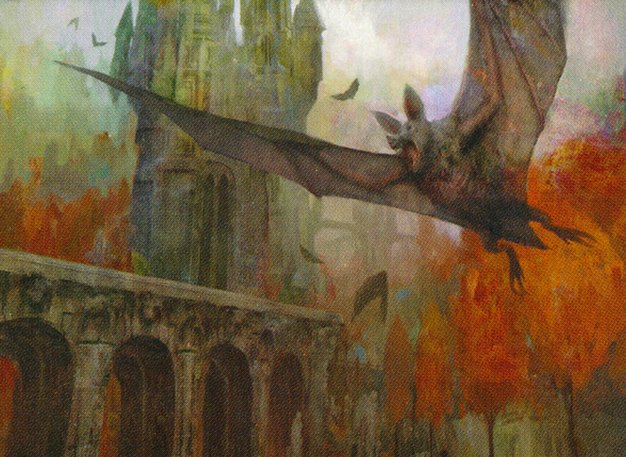
Bartizan Bats by Nils Hamm
Those of us who play Magic, whether we started with Fallen Empires or with Final Fantasy, develop an emotional relationship with the game. Sometimes, we internalize it as part of our personal identity. I play Golgari because I love midrange and graveyard decks, absolutely. But I also play Golgari because I am petrified of death, because I fear my body and its inevitable failure and the Golgari, in aesthetics and gameplay, reminds me that we come from goo and to goo we will return. I play Sultai because it’s Golgari But More Annoying, but also because it feels like the brackish marshes of the Lowcountry, where I learned about the natural world from my grandparents. I avoid Boros and Azorius decks when possible—and do poorly with even the best Boros/Azorius/Jeskai pools in Limited—because they feel authoritarian. Magic affects my identity, and my identity affects how I engage with Magic—it’s a fascinating tension, and one that was cemented with Ravnica: City of Guilds. I’m not alone. Our frequent returns to Ravnica, the predominance of the guild emblems in Magic merchandise, the fact that the names have stuck for twenty years–Wizards knows that Ravnica is gold, and it has been a part of my life for just over half my life at this point.
Ravnica is precious to me, but I am not precious about Ravnica. There is space for a purist Ravnica Cube that runs nothing but 360 cards from the original block of City of Guilds, Guildpact, and Dissension, and space for a sprawling 540 Cube that runs all the hits from City of Guilds through Murders at Karlov Manor. There is even space for my Cube, which runs cards from outside the canonical Ravnican sets—there are picks that cause consternation, but every card within it is a card I argue embodies what each Ravnican Guild does best, and why they’re able to do it. My Radical Ravnican Cube is about the way Ravnica felt, not about cards that depict an Azorius lawmage or a Rakdos reveler. The Cube is 90% Ravnica, but that 10% is where the friction lies. Friction is good. Friction sharpens metal into usefulness, friction creates sparks to set tinder aflame.
My favorites among my radical picks–the ones that make Cube players double-take at the expansion symbol or the art–are the ones that demonstrate how important Ravnica was to Magic’s longevity. A representative example from each guild:
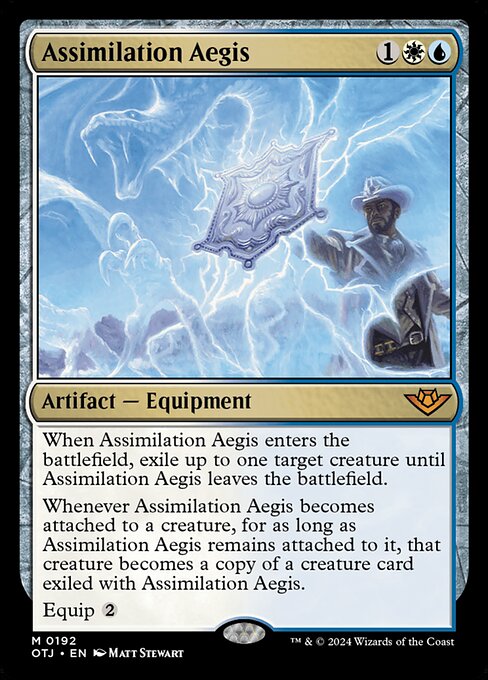
Assimilation Aegis–Aside from the art, this card could be dropped directly into a Ravnica set with little consternation. The name is perfectly Azorius–protective and a bit authoritarian–and the flavor, of a shield that rebuffs and absorbs, could easily be one of the guild’s punitive strategies. It’s an excellent Cube card–it scales up in utility based on the power of the Cube, and is powerful but disruptable–and plays into the Azorius Senate’s strengths.

Singularity Rupture–the newest addition to the Cube and the replacement for Enter the God-Eternals, which ironically feels less like Ravnica, despite being set on the plane. The Dimir made mill plausible as an archetype after a decade as a casual strategy, and Singularity Rupture honors that, while serving as a classic board wipe to make sure your opponent is sweating as their deck dwindles.

Hurl Through Hell–In original Ravnica, Rakdos got the short end of the stick in the removal cycle–Wrecking Ball simply didn’t compare to Putrefy or Mortify. Hurl Through Hell is flavor-neutral and feels like a spell the Cult of Rakdos would especially appreciate, serving either as expensive but permanent removal, or a costly but flexible theft spell. Rakdos cultists love comedy, and nothing is funnier than flipping the script on your opponent by taking their best creature.
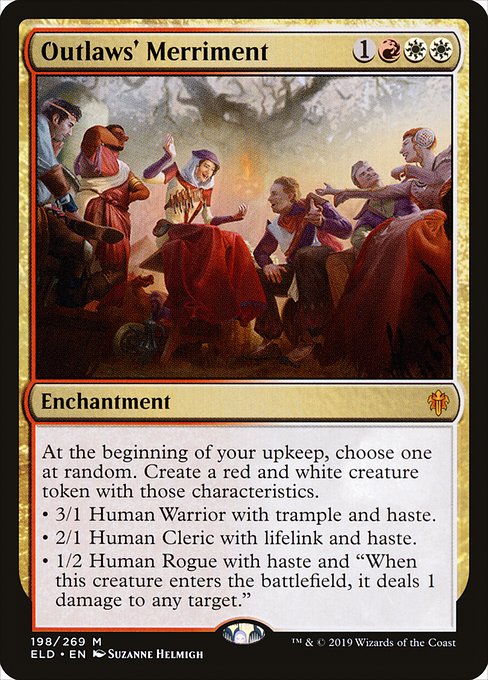
Outlaws’ Merriment–Here’s where the flavor breaks down a bit, but the friction is worth it. The Boros are as far from outlaws as you can possibly get, but I find Merriment is a more fun card than Assemble the Legion while still feeling like an army being mustered. It feels right for Boros to randomly recruit a hasty token each turn, and their stats intersect well with mechanics like Mentor, Battalion, and Training.
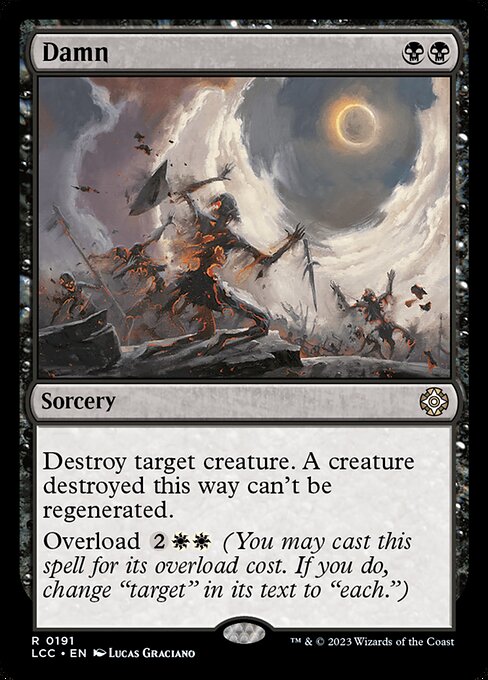
Damn–Nothing fancy here, just a purely Orzhovian spell, even if it comes from Modern Horizons. It feels odd to run this in Selesnya or Boros, but you can and should, and even the Black-aligned guilds don’t mind a bad Doom Blade. The Izzet may not appreciate their guild mechanic being exploited in this way, but they have to respect the creativity of this card.
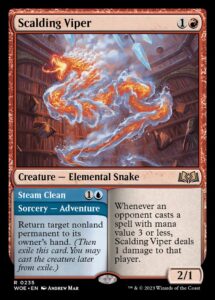
Scalding Viper//Steam Clean—Fire//Ice felt like Izzet before Izzet existed, and Scalding Viper feels like the best encapsulation of the Izzet League since. Izzet loves value and casting multiple spells in a single turn, and the Viper even adds a minor Eidolon of Endless Revels effect.
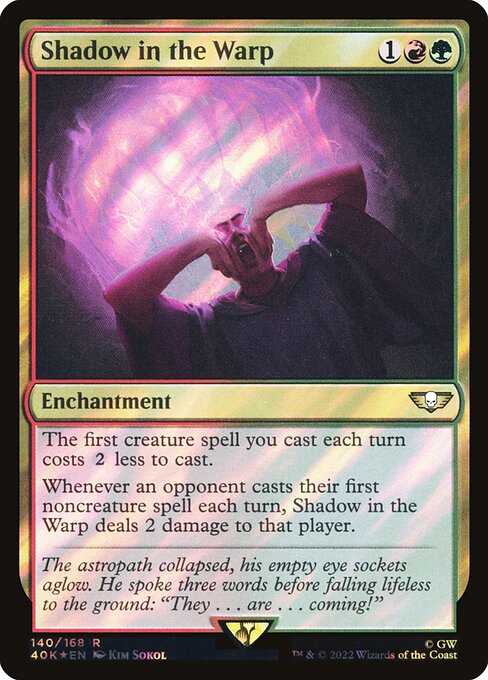
Shadow in the Warp–The name and art are a bit dissonant, for sure, but Shadow in the Warp does everything Gruul wants to do: cast creatures for a discount and punish your opponent for trying to interact with them. Shadow in the Warp into Ruric Thar, Unbound is a huge beating, and one that feels very Gruul no matter what the Warp may be.

Simic is one of the easiest guilds to soup up–the game of Magic is built around drawing cards and playing lands, and the Blue-Green guild has the best tools to do so. I wanted to stay away from Growth Spiral and Eureka Moment, but we can still reward the Combine for doing what they do best and in a mode that Momir Vig would find worthy of study with Genemorph Imago. The Eumidians may be aliens with terraforming technology, but they’re still Insect Druids, and that’s as Ravnica as it comes. Evolving up your Saprolings into 6/6 creatures is perfectly attuned to the guild’s goals, and Genemorph Imago is the best way to do so.
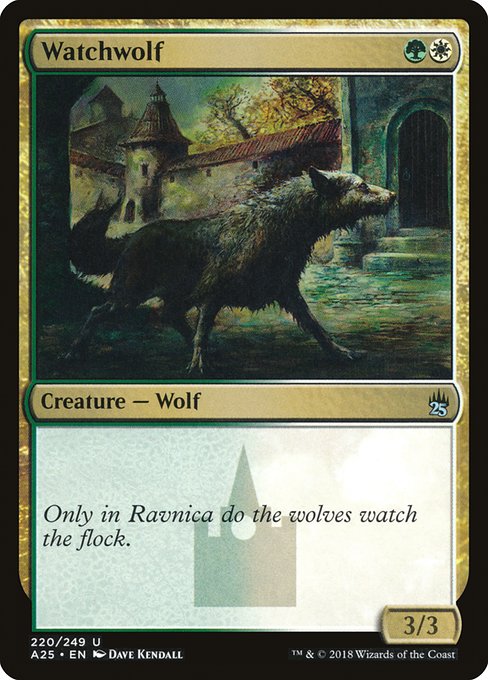
After twenty years, Watchwolf has been thoroughly outclassed, from Fleecemane Lion to Faithful Watchdog, and so the Selesnya Conclave has lost a bit of its luster. I’m not interested in replacing the Wolf, though, so I’ve had to find power elsewhere–luckily, the perfect Selesnyan champion exists in Wylie Duke, Atiin Hero. Duke beats for 4 until outclassed on the battlefield, at which point she becomes a Convoke engine. The stats may be more than we could expect in 2005, but the design could have easily been a Tolsimir.
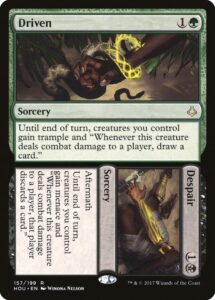
Driven//Despair takes some work to optimize–you’ll need a handful of creatures, ideally ones that are difficult to block, and you’ll want to cast both halves. Luckily, the Golgari Swarm, with their expendable Saprolings and Deathtouch creatures, is an ideal fit for the Aftermath card. Even if you Dredge Driven//Despair away, it has utility for you, and can Mind Twist your opponent and force through damage at a time they’re not expecting.
Ravnica was not cozy, but it was comforting. It’s a perilous world, where you could wander down to the market for a blini-cake and a pint and get eviscerated by a Daggerclaw Imp, catch the plague from a Rotbelly Ogre, or get squashed by a rampaging Wurm. There’s an active afterlife, which is some consolation, and protection for those who pay their dues and sign over their lives to the Guilds (mostly protection against the other guilds—all the mundane threats still exist). That’s the core tension of Magic—every world is inherently violent, even Lorwyn and Bablovia, because every format needs kill spells and combat tricks—but the tension made Ravnica seem especially rich.
There’s tension in all well-realized worlds in speculative fiction and a reflection of the tensions of our own world in Ravnica. There is the institutionalized cruelty of our prison system in the Boros (Citywide Bust), religious corruption and usury in the Orzhov that mirrors what we see in our churches (Ostiary Thrull), and the antihumanism of our modern tech industry in the “progress at all costs, no matter what breaks” ethos of the Simic (Assault Zeppelid). The Boros use Simic technology to commit war crimes against civilians, and the Golgari process the corpses. The Rakdos offer malignant pleasures on Saturday nights, and the surviving sinners come to Orzhova for penance on Sunday morning or to the Selesnya to wipe their memories clean. The Izzet construct the infrastructure, blame the Rakdos when a burst pipe takes out a city block, and the Azorius stand by to issue regulatory edicts. It’s an amazingly realized structure, a massive city as a self-enforcing and perpetuating ecosystem. “Evil Catholic Church” isn’t new territory, but “evil Catholic Church that uses the sloughed-off skin of its bloated clerics to make little servants” is why Magic exists, and why it’s survived for longer than the average lifespan of a Ravnican city-dweller. It wasn’t a cozy world, but it was a safe world.
After the tumult of Mirrodin and Kamigawa, here was a return to European fantasy—but that Europe was a little more East than we got in Dominaria, and there were alien elements (and Elementals) that truly made the world feel worthy of exploration. Ravnica threw an absurd amount of new vocabulary and invented words at us—from Moroii to Krasis to Necrosage to Rusalka—but it made it attractive to learn what those words meant.
The finest compliment due Ravnica is how many of its designs are still playable—or even Standard-legal—twenty years later. Right now, we can play Lightning Helix off a Sacred Foundry in Standard, just as we could in October of 2005. Before its banning, Standard Pixie decks were running a variant of Ravnican staple Peel From Reality, and Dark Confidant, first printed twenty years ago, is back and still a contender, thanks to Final Fantasy. Leyline of the Void, brought back in Duskmourn, still neuters graveyard decks as it once did Dredge and Hogaak. Mark Rosewater’s darling Doubling Season, now in Foundations and legal through 2029, originated in Ravnica. Mortify and Trygon Predator and Frenzied Goblin are quietly legal in Standard. These are just the cards currently at our disposal in Standard, to say nothing of cards like Chord of Calling, Life from the Loam, and Remand that once defined Modern and that still turn up, even with twenty years of upgrades to the format. The ultimate compliment to Ravnica is that I can easily imagine the cards first printed twenty years ago in the block–and those it continues to inspire, two decades later–appearing in Cubes for another two decades. There may be more exciting mana rocks than the Signets–I have a hard time imagining someone acclimated to The Soul Stone being excited to pick Orzhov Signet over the Infinity Stone–but they’re still reasonable all these years later.
That’s the magic of Ravnica, and it’s nothing more or less than the magic of Magic.
Rob Bockman (he/him) is a native of South Carolina who has been playing Magic: the Gathering since Tempest block. A writer of fiction and stage plays, he loves the emergent comedy of Magic and the drama of high-level play. He’s been a Golgari player since before that had an official name and is never happier than when he’s able to say “Overgrown Tomb into [mtg_card]Thoughtseize,” no matter the format.

